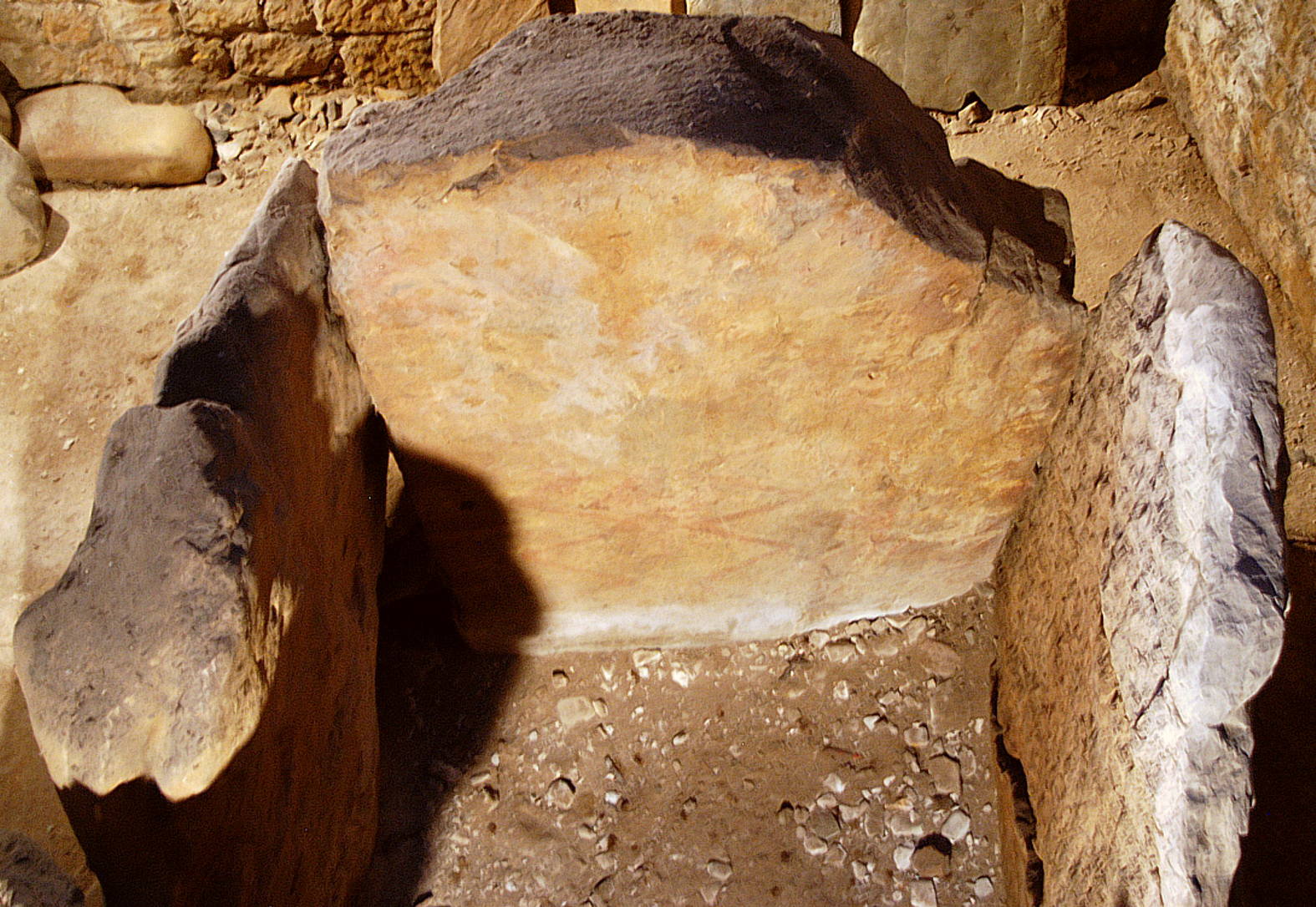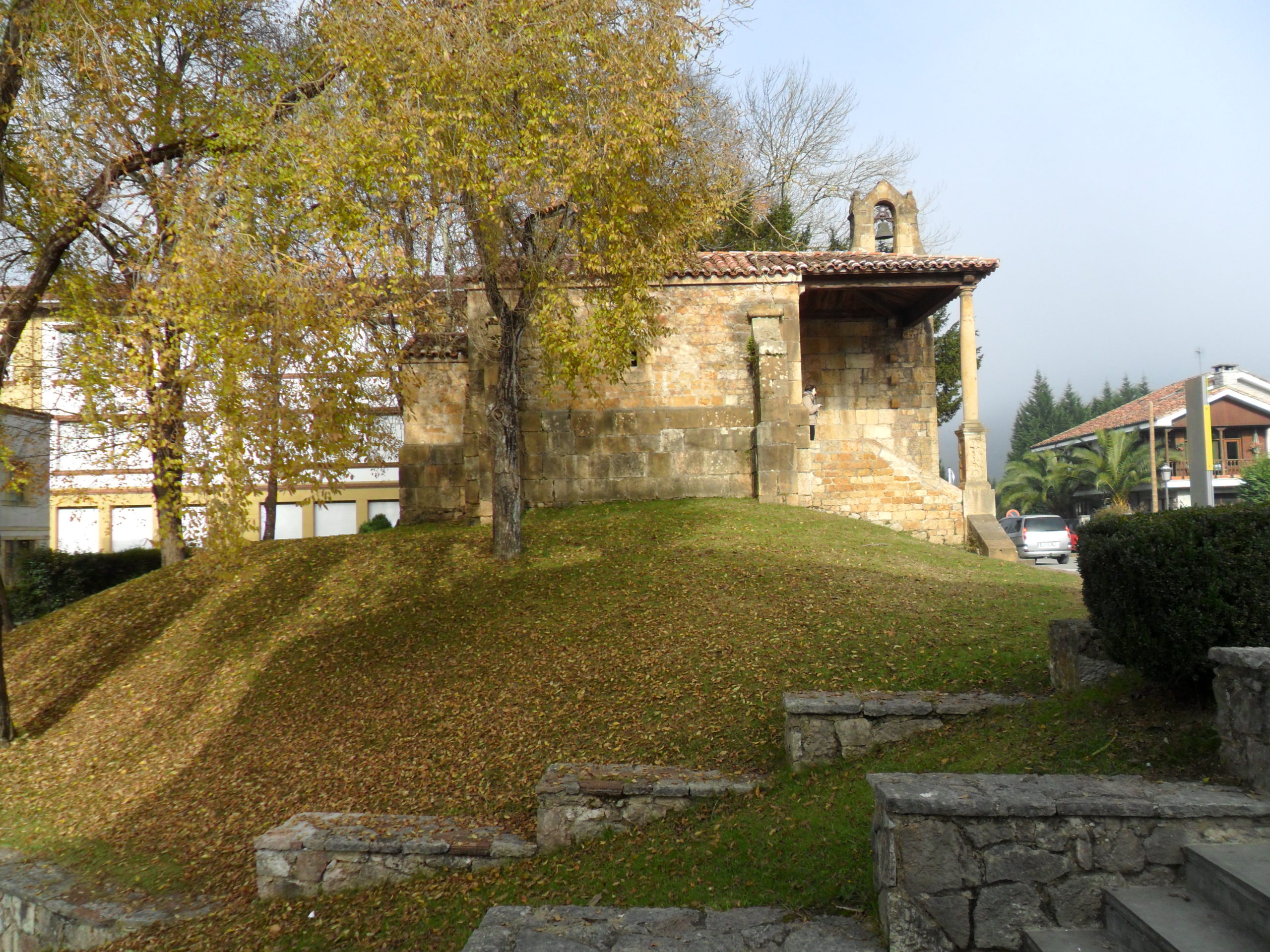Cronología de las representaciones rupestres: Neolithic (4000 BC).
Descripción general del destino: Santa Cruz Dolmen is a funerary monument dating from 4000 BC, formed by an artificial mound inside which a burial chamber is composed of several stone slabs. The mound covering the megalithic monument was flattened and the chamber was levelled to its foundations in 1936. The current chapel and burial mound are therefore of modern construction. The dolmen is composed of five large slabs of stone and two smaller ones that form a rectangular chamber that must have had an entrance on its southeast side. It is large in size, as a person can move around inside standing upright. The shape of the covering is unknown, although it was most likely supported by a single slab. Another element that makes Santa Cruz Dolmen of special interest is the group of paintings, engravings and pitting that covered the inside of the chamber. The remains of the decoration still conserved comprise red strokes of paint, with predominantly broken lines. Painted, engraved and pecked representations. A tomb consisting of an artificial mound with a polygonal chamber in its interior. It is open on the eastern side to allow access to the chamber, with its outstanding geometric decoration on its internal face. The dolmen is visible from the centre of the Chapel of the Holy Cross. Its structure is formed by five large slabs of stone and two smaller ones forming a rectangle.
Historia del sitio: In the year 737 A.D., during the reign of Favila I, the chapel was built in honour of the Holy Cross. According to tradition, it is the first well-documented Christian church in the history of Asturias, and the monarch’s tomb.
Descripción de los recursos museográficos: A little exhibition about the dolmen is available inside the Chapel.








